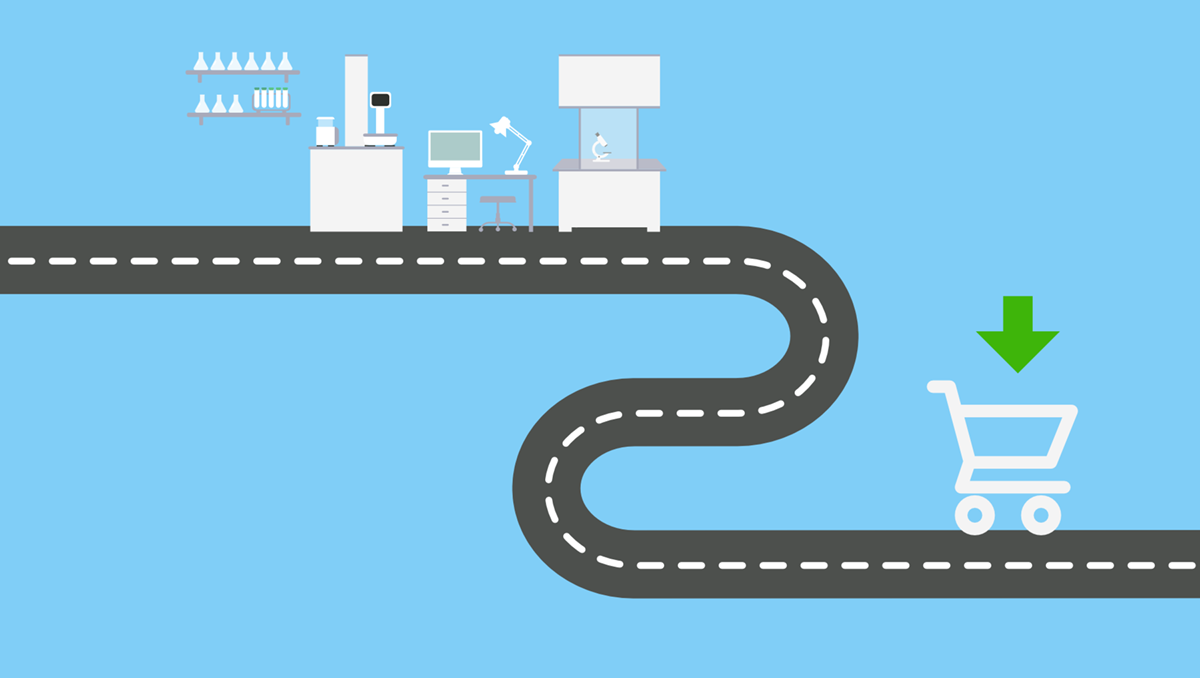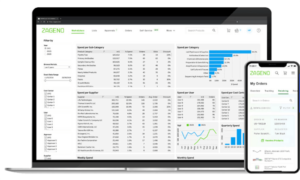From the Lab Bench to the Cart: Understanding the Scientific Buyer’s Journey

Lab supply purchasing has come a long way from when scientists had dedicated relationships with a single vendor representative and the lab procurement process was almost entirely manual. In some R&D labs, though, there are remnants of the past embedded into otherwise streamlined workflows.
With the growing complexities of research labs, particularly in the biotech and pharmaceutical R&D space, scientific buyers expect simple, user-friendly platforms for lab supply research and purchasing that integrate with their lab management tools.
Lab managers are managing complicated experiments and a staff while needing to maintain safety and be aware of lab budget and overall performance. It can be a high pressure role. As a vendor, venture partner, leadership or finance team, supplier, or company who sells to or works directly with bench scientists, it’s important to understand the day-to-day experience of researchers in the lab.
Here’s an inside look into the scientific buyer’s journey and takeaways for lab suppliers to better serve their target customers.
How R&D Labs Have Been Impacted by the Supply Chain
In life sciences, lab supply product pricing was historically set by suppliers and negotiated at bulk quantities with labs on a quarterly or bi-annual basis. Just like other industries, this has been the status quo.
Now, with the subscription-based economy and the growing need for visibility in the purchasing process, buyers are now becoming more informed and consistently thinking about saving costs.
And in a time where many supplies aren’t available, labs are turning to more extensive marketplaces that have a wider selection of products from a variety of vendors. In 2021, a ZAGENO customer, who is an R&D lab, spent $1.2 million in lab supplies and saved 19% of the overall costs by using a marketplace. Out of this 19%, or $240,000, 73% of the R&D lab’s cost savings came from comparing vendor prices on the ZAGENO online marketplace. This is the evolution of scientific purchasing.
From the Lab Bench to the Cart: The Steps of Lab Supply Purchasing
Once labs identify the needs that they have, it takes many steps for the items to get in the hands of bench scientists. Let’s understand the difference between the process of ordering lab supplies without a life science marketplace, and the one with it.
The Inefficient Way Scientists Order Lab Supplies
Here’s how many labs procure products — on a batch ordering basis and managed by one individual — the lab manager or PI. This method is common but can be time-consuming, inefficient, and a hindrance to meeting research milestones.
1. A need is identified.
Lab researchers and scientists manually keep a track of supplies and equipment they require for their experiments. This manual tracking is not always adequate as it may involve last-minute requests, overlooking available supplies and an added task for lab managers.
2. A scientist requests an item from their lab manager.
Depending on the existing inventory management setup, ideally this would look like a request for a set of products well in advance of an experiment that would be ordered prior to that experiment starts. Without a real-time inventory management system and quick way to review former orders, this can quickly lead to over-ordering some products and letting others expire. In an inefficient system, scientists request supplies often and overwhelm the point person, delaying research.
3. Lab managers take all their requests and begin to search in countless tools.
After researchers submit their requests for supplies, lab managers start the hunt for the right product, of the right quality, at an affordable cost and with a reasonable delivery time. Ticking off all those items is time-consuming, and many lab suppliers have outdated search features, or limited product availability information.
4. Lab managers manually request items one by one and submit them for approval if needed.
When there are large orders, lab managers often have to submit requests to finance teams and seek out approval before placing an order. This can take even more time to process and delays research even more.
5. Scientists ask where the supplies are as they try to plan out lab space, staff, and resources.
After placing the order, the most frequent questions lab managers get asked are “Have you ordered it?”, “Do you know where my order is?”
With different vendors, delivery services, and no proper inventory system, there’s no way to track the order. It’s one of the aspects of a lab managers’ job that drives them crazy. Without proper access to vendor information and tracking details, research teams are left at a roadblock, sometimes wasting costly lab space.
6. Lab managers request updates from supplier representatives to communicate back with lab staff.
The only way to track the status of the order is to call the vendors, supplier companies, or delivery agents, which is a tedious process and still doesn’t guarantee the exact status of the order.
These frustrations are an inevitable part of a lab manager’s job role, but with modern platforms and management tools, the uncertainties of outdated ways aren’t the only option. Let’s see how this can be optimized.
The Efficient Way Scientists Order Lab Supplies
The shift to a digitized procurement process significantly impacts the life of lab managers. It offers a more streamlined process to order and manage lab supplies without getting slowed down by third party processes and a need for manual, repetitive tasks.
1. A need is identified.
A life science marketplace can track a vendor’s available supplies, prompt re-ordering popular items, and forecast future needs. With this digitized tool, labs can quickly identify which products are in the highest demand and stock up, even using multiple vendors in the system to meet scientists’ needs. It also enables scientists to stock supplies in advance for their experiments in case of continued supply chain challenges and shipping delays.
2. A scientist searches for the item in a lab supply marketplace and adds it to the cart.
After identifying the need for supplies, scientists and researchers can simply look up the supplies in the marketplace and add them to the cart. Advanced marketplaces like ZAGENO have a default cost comparison system that helps scientists choose the best supplies at a reasonable cost. ZAGENO also offers expert advice from scientists to help customers choose the right products for their research.
3. The scientist submits the cart to the lab manager for approval.
After adding all the supplies to the cart, scientists can simply send it over to their lab manager for review and approval, saving time that’s otherwise spent on building extensive lists and chasing managers manually. Depending on the approval requirements, some scientists may be able to submit orders under a certain total cost without additional approval, speeding up the process even more.
4. The lab manager reviews requests in batches, saving time.
All that’s left for the lab managers to do is review the requests and make purchases well in advance. If needed, a copy of the cart can be sent over to the finance team for review and approval using a digital, one-click approval process.
5. The scientist and lab manager can review shipment details and track updates in real-time without having to contact the supplier.
With digital procurement, all stakeholders can quickly check their own order status, enabling them to adjust timelines and prioritize experiments accordingly, contributing to an overall more efficient lab. Marketplaces can aggregate purchasing data in a dashboard, which provides additional insights to optimize lab spending and lab supply purchasing.
Online marketplaces are changing the way labs purchase supplies by building a comprehensive network of vendors and digitizing the procurement process. It’s easier for lab supply companies to increase their customer base and build a rich network with R&D labs on a platform that customers trust. Learn more ways to connect with scientists in biotech.


